Your customers are turning away from single-use plastics. This creates a huge opportunity, but only if you have the right sustainable product to offer. Stainless steel cups are the solution.
The demand for stainless steel cups is growing because consumers are more environmentally aware. They want products that are reusable, durable, and recyclable. Stainless steel meets all these needs, making it a popular and responsible alternative to disposable plastic cups for both consumers and businesses.
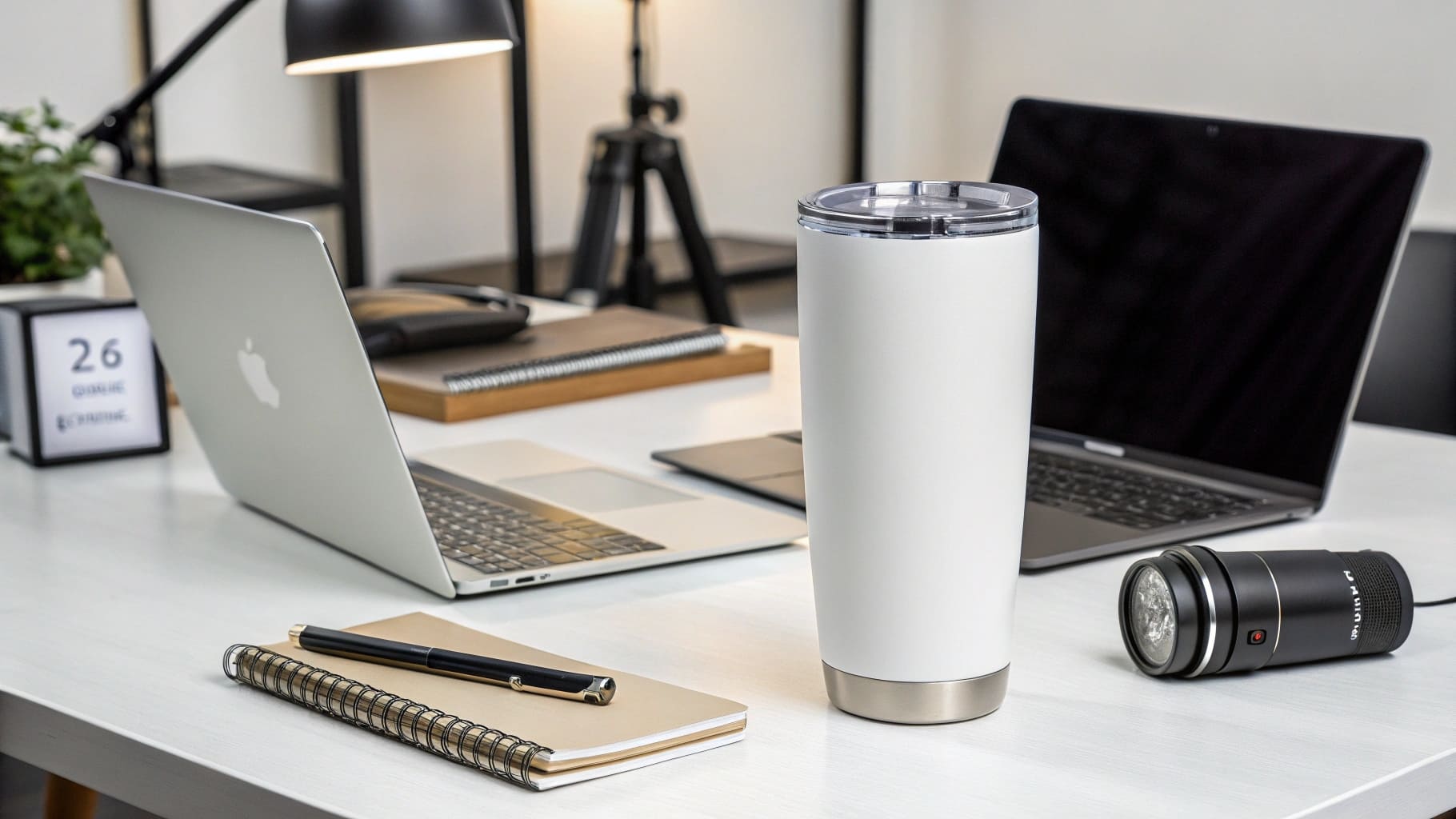
This shift in consumer behavior is a huge signal for businesses like yours. But before you invest in a large shipment of stainless steel drinkware, you probably have some questions. Are they truly a good investment? How eco-friendly are they compared to other options? And what about health and daily use? It's important to have clear answers to these questions. Let's break down everything you need to know to make a confident decision for your brand.
Are Stainless Steel Cups Really Worth the Investment for Your Business?
You see the trend toward sustainability. But stainless steel cups1 have a higher upfront cost than plastic. This might make you wonder if you can maintain a healthy profit margin.
The truth is, these cups offer value that goes far beyond the initial unit cost. They build your brand reputation and secure customer loyalty in ways cheaper alternatives simply can't. By choosing stainless steel, you're not just selling a cup; you're selling a commitment to quality and sustainability.
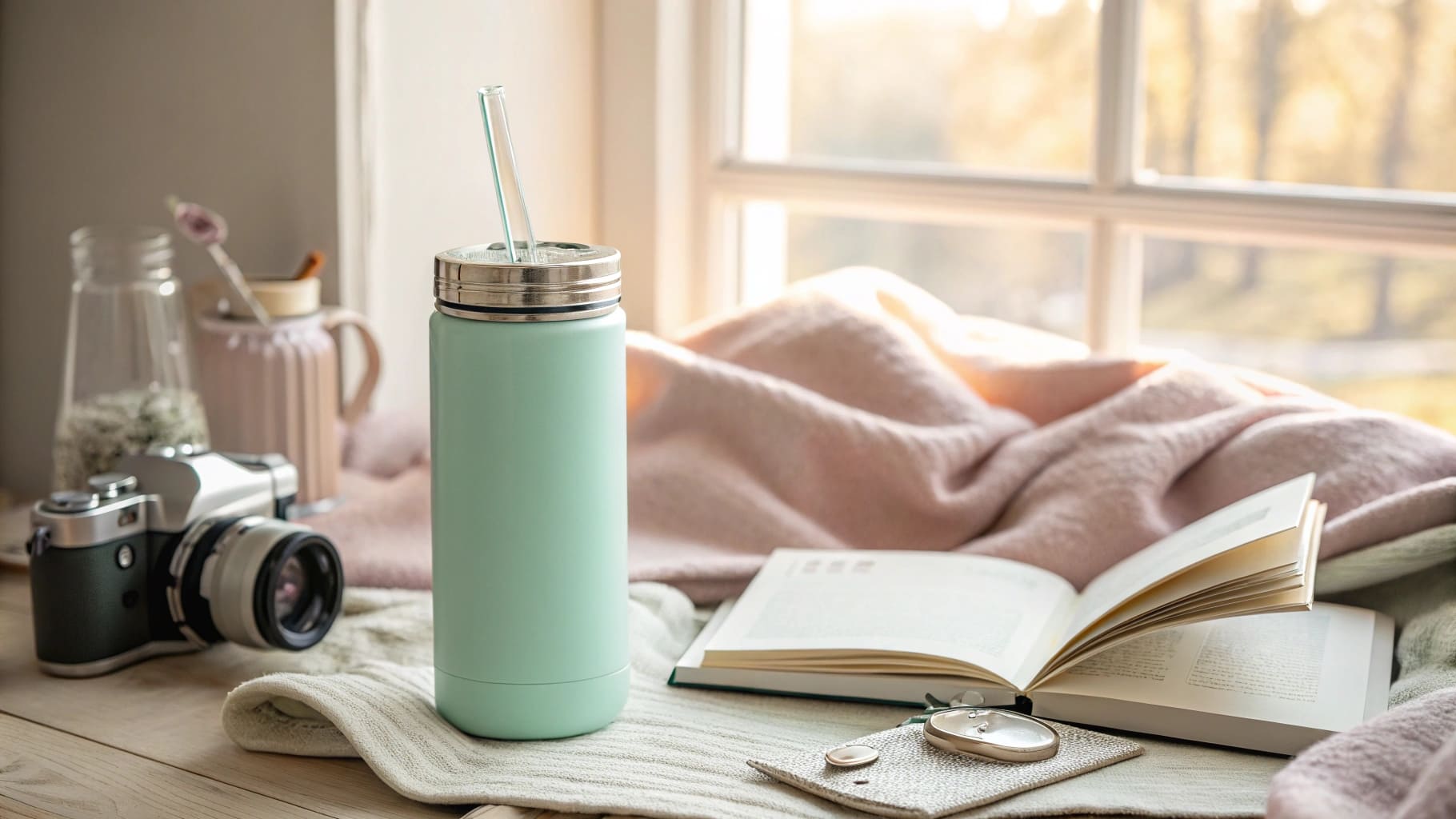
Beyond the Unit Cost: A Look at Total Value
For a business owner, the "worth" of a product is all about the return on investment (ROI). With stainless steel cups, the ROI is excellent, but you have to look past the initial price per unit. The real value comes from what the product represents to your customers. Today's buyers are willing to pay more for products that are durable and eco-friendly. When you put your brand logo on a high-quality stainless steel cup, you are immediately perceived as a premium, responsible brand. This isn't just about feeling good; it's smart business. This premium perception allows for a higher retail price and a healthier profit margin. I've worked with many clients, like Mark from Canada, who initially worried about the cost but found that their customers were happy to pay for quality that lasts. This long-term value is key.
Here is a simple breakdown from a business perspective:
| Feature | Single-Use Plastic | Stainless Steel Cup |
|---|---|---|
| Perceived Value | Low / Disposable | High / Premium |
| Brand Image | Neutral or Negative | Positive / Eco-Conscious |
| Customer Loyalty | Low (Price-Driven) | High (Value-Driven) |
| Profit Margin | Thin | Healthy |
| Lifespan | Minutes | Years |
Just How Eco-Friendly Are Stainless Steel Cups, Really?
The term "eco-friendly" gets used a lot in marketing. Your customers are smart, and they can spot "greenwashing" from a mile away. You need to know the real facts.
Let's look at the entire life of a stainless steel cup. This will help you understand its true environmental footprint and speak confidently to your customers about its benefits. Stainless steel's biggest advantage is its incredible durability, which is the key to its eco-friendly status.
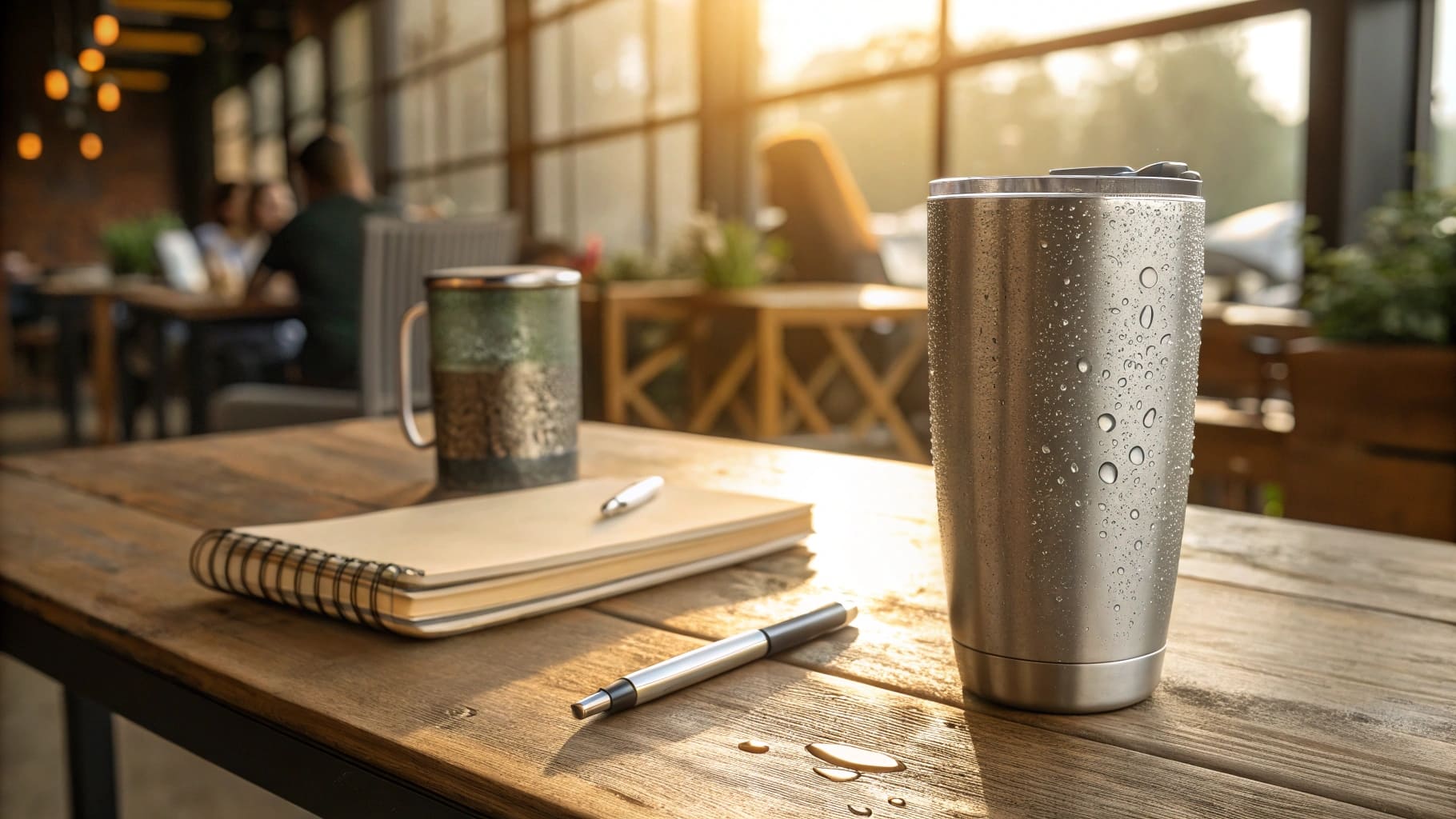
Analyzing the Full Lifecycle
Yes, stainless steel cups are very eco-friendly, mainly because they can be used thousands of times. A single steel cup can prevent thousands of plastic or paper cups from ending up in a landfill or the ocean. It's true that making stainless steel requires energy. We have to mine iron ore and other elements and melt them at high temperatures. I believe in being transparent about this. However, that initial energy cost is a one-time event. In contrast, single-use cups require energy and resources for every single cup produced, used once, and then thrown away.
Studies show that a stainless steel cup becomes more environmentally friendly than a disposable cup after just 15 to 20 uses. Considering most people will use their cup daily for years, the long-term benefit is enormous. At the end of its very long life, stainless steel is also 100% recyclable. It can be melted down and used to create new high-quality steel products without any loss of quality. As a manufacturer, we focus on using efficient processes to minimize our own footprint, ensuring the product you receive is as sustainable as possible.
When It Comes to Drinkware, What Is the MOST Eco-Friendly Cup?
You want to offer the absolute best sustainable option for your customers. But with glass, bamboo, and silicone also available, it can be confusing to know which material is best.
Let's compare the top reusable options directly. This will show you why stainless steel's unique combination of features often makes it the most practical and effective choice for reducing waste. It’s all about finding the right balance of sustainability and real-world usability.

A Head-to-Head Comparison
The most eco-friendly cup is the one that gets used the most. A cup that is fragile or inconvenient will just sit in a cupboard, which doesn't help the environment at all. That's why durability is so important. Stainless steel excels here. It's tough enough to handle daily drops, commutes, and adventures without breaking. While other materials have their own benefits, they also come with trade-offs that can make them less practical for everyday, on-the-go use.
Let's look at a direct comparison to see where stainless steel stands:
| Material | Pros | Cons | Best For |
|---|---|---|---|
| Stainless Steel | Extremely durable, great insulation, 100% recyclable. | Higher initial energy to produce. | Everyday, on-the-go use for years. |
| Glass | Inert (no taste), recyclable. | Fragile, heavy, not insulated. | Careful use at home or in the office. |
| Bamboo | Made from a renewable resource. | Not durable, often contains plastic binders, not recyclable. | Limited use, not for hot liquids. |
| Silicone | Lightweight, flexible, collapsible. | Not easily recyclable, can retain odors and stains. | Travel when space is very limited. |
When you look at this table, it's clear that for a product meant to replace disposables in all situations, from the office to a hiking trail, stainless steel's durability gives it a major advantage.
Are There Any Health Concerns with Drinking from Stainless Steel Cups?
Your customers trust you to provide safe products. A health issue or product recall is the last thing any business owner wants. You need to feel 100% confident in the material you're selling.
Let's talk about the science of food-grade stainless steel. Understanding what makes it safe will give you and your customers peace of mind. The key is to source from a supplier who uses the right kind of steel.
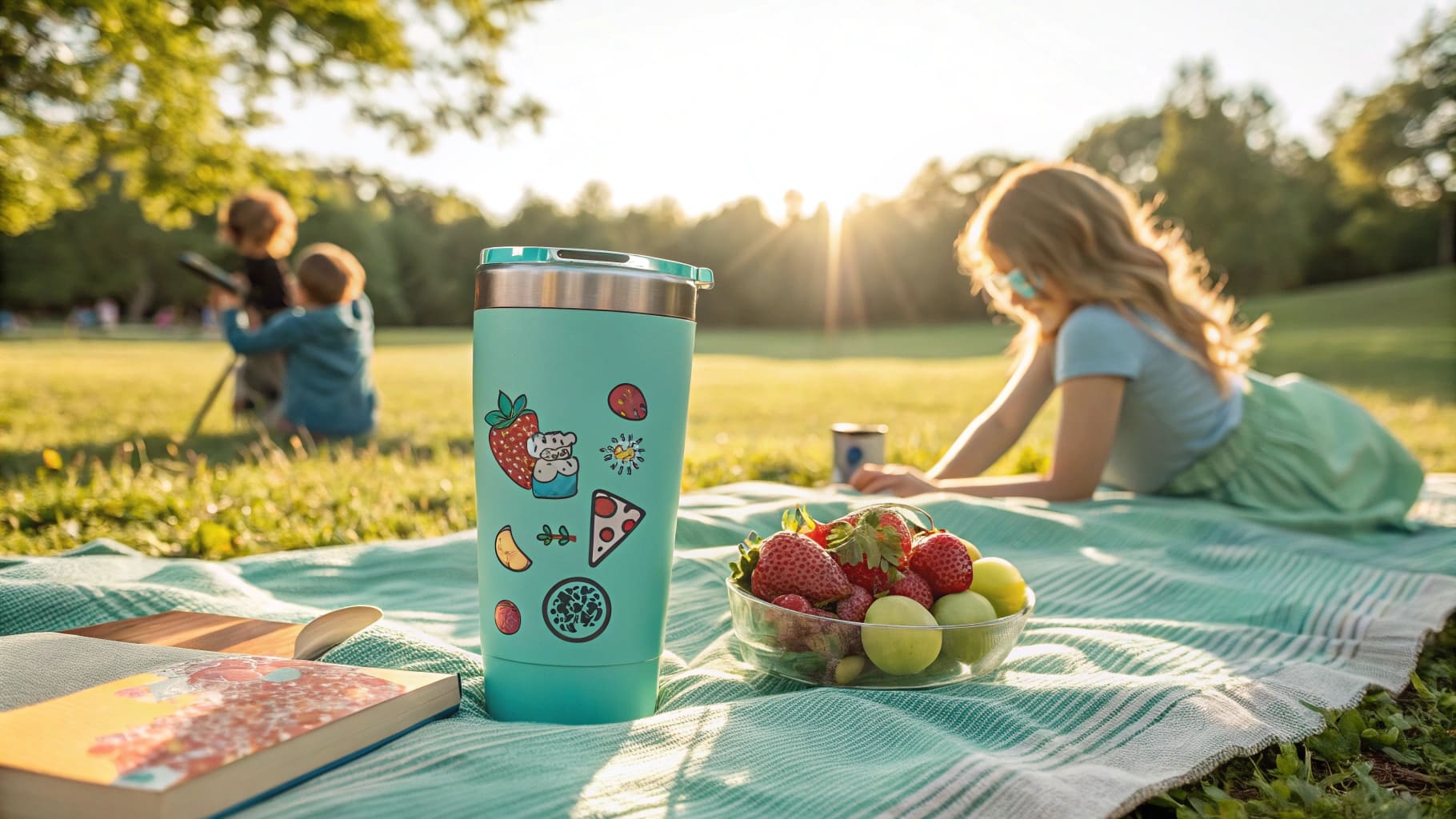
What "Food-Grade" Actually Means
It is extremely healthy to drink from a quality stainless steel cup. The term you need to know is "food-grade," which usually means 18/8 or 304 stainless steel2. I get asked about this by clients all the time, so let me explain it simply. The "18/8" refers to its composition: 18% chromium and 8% nickel. The chromium is the most important part for health and safety. It reacts with oxygen in the air to form a thin, invisible, and non-reactive layer on the surface of the steel. This layer protects the metal from rust and corrosion and, most importantly, prevents any metals from leaching into your drink.
This is why the same material is used for surgical instruments and professional kitchen equipment. It's stable, easy to clean, and doesn't harbor bacteria. It is also completely free of BPA, a chemical found in some plastics that has raised health concerns. When you buy from a reputable supplier, you should always ask for certifications like FDA or LFGB test reports. We provide these for every shipment, as it proves the material is safe and gives my clients like Mark the confidence they need to sell to their own customers.
Is It a Good Idea to Drink Hot Coffee from a Stainless Steel Cup?
Coffee drinkers can be very particular. They worry about the taste of their coffee and the temperature. Will a steel cup make their coffee taste metallic or be too hot to hold?
The answer is a clear no, as long as you have the right kind of cup. Modern insulated stainless steel mugs are designed specifically for hot drinks like coffee, solving these exact problems. They actually improve the coffee-drinking experience.
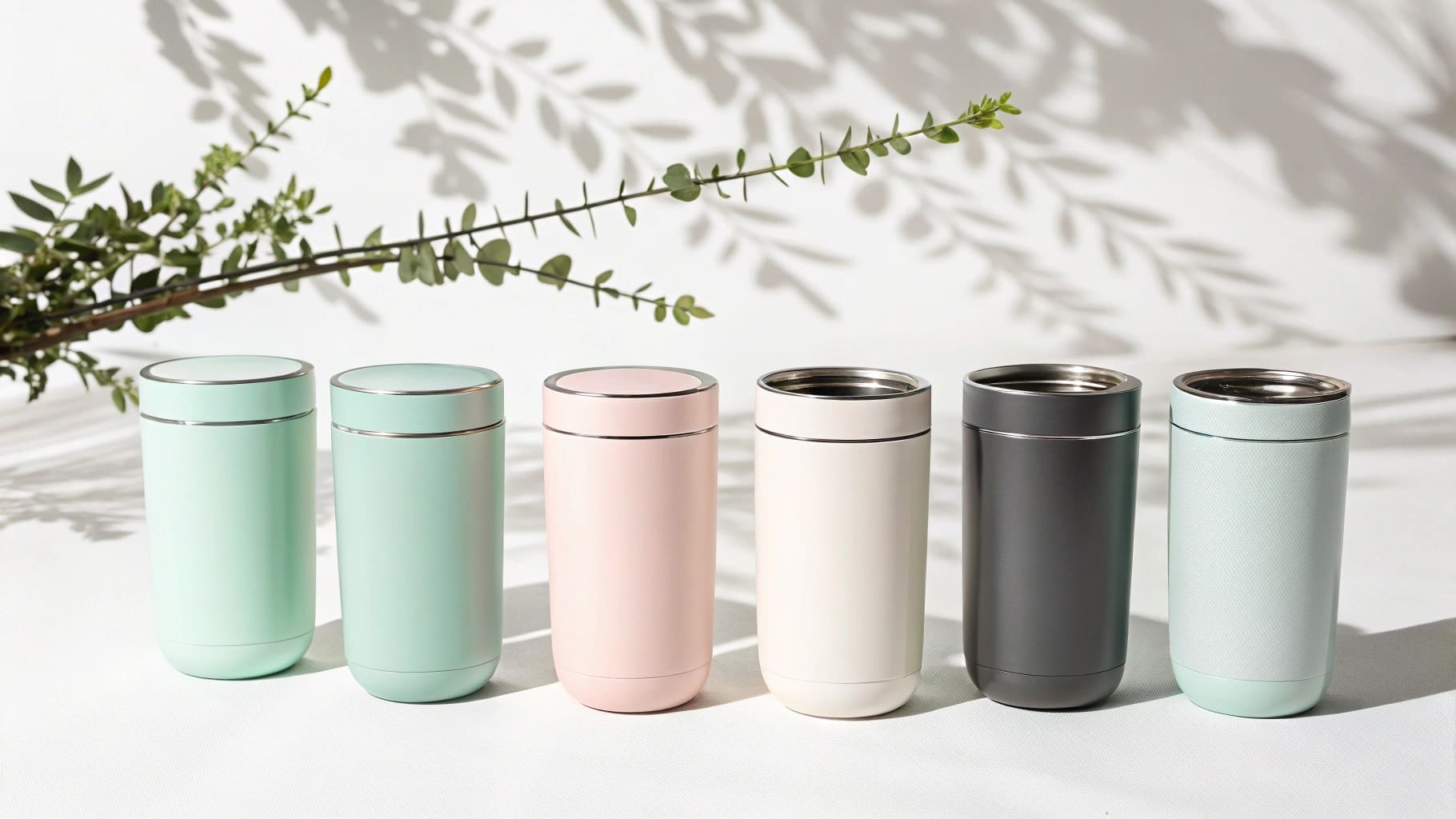
The Perfect Match: Coffee and Insulated Steel
A double-wall vacuum-insulated stainless steel cup3 is the perfect vessel for coffee. Here’s why. The design features two walls of stainless steel with a vacuum-sealed gap in between. Since there is no air, heat has a very hard time transferring from the inner wall to the outer wall. This means the coffee inside stays hot for hours, while the outside of the cup remains cool to the touch. You'll never burn your hands. I drink my tea from one every morning, and it’s still warm by lunchtime.
The concern about a "metallic taste" is also a common question. This only happens with cheap, low-grade metal. High-quality 18/8 food-grade stainless steel is non-reactive, meaning it will not impart any flavors into your coffee or retain the taste of yesterday's brew. Your coffee will taste exactly as it should. Furthermore, the smooth steel surface is easy to clean and doesn't get stained by coffee oils like some plastics can. For any brand targeting coffee lovers, an insulated stainless steel mug is not just a good option; it's the best option.
Conclusion
Stainless steel cups are a smart choice. They meet consumer demand for sustainable, healthy, and high-quality products, making them a profitable venture for any modern brand.
-
Explore the advantages of stainless steel cups for businesses, including sustainability and customer loyalty, to make informed decisions. ↩
-
Discover the advantages of 18/8 or 304 stainless steel in food safety and health. This knowledge can enhance your product offerings. ↩
-
Learn about the innovative design of double-wall vacuum-insulated cups that keep your coffee hot for hours without burning your hands. ↩

